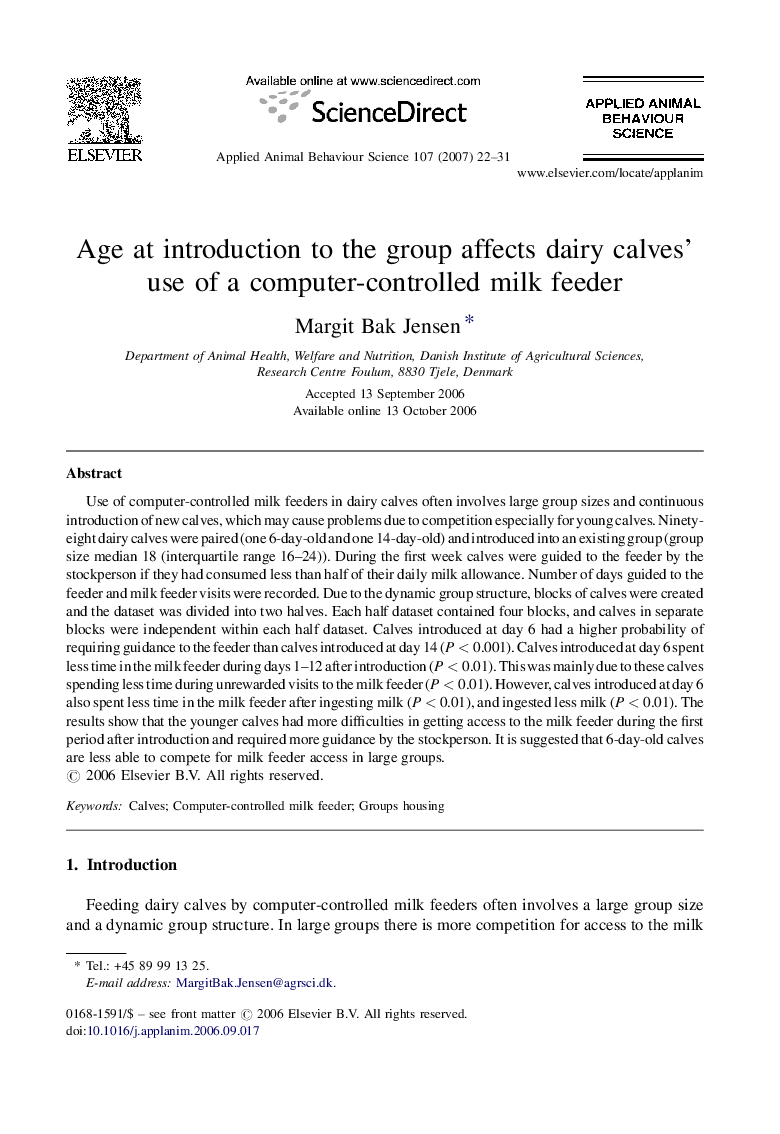| Article ID | Journal | Published Year | Pages | File Type |
|---|---|---|---|---|
| 4523931 | Applied Animal Behaviour Science | 2007 | 10 Pages |
Use of computer-controlled milk feeders in dairy calves often involves large group sizes and continuous introduction of new calves, which may cause problems due to competition especially for young calves. Ninety-eight dairy calves were paired (one 6-day-old and one 14-day-old) and introduced into an existing group (group size median 18 (interquartile range 16–24)). During the first week calves were guided to the feeder by the stockperson if they had consumed less than half of their daily milk allowance. Number of days guided to the feeder and milk feeder visits were recorded. Due to the dynamic group structure, blocks of calves were created and the dataset was divided into two halves. Each half dataset contained four blocks, and calves in separate blocks were independent within each half dataset. Calves introduced at day 6 had a higher probability of requiring guidance to the feeder than calves introduced at day 14 (P < 0.001). Calves introduced at day 6 spent less time in the milk feeder during days 1–12 after introduction (P < 0.01). This was mainly due to these calves spending less time during unrewarded visits to the milk feeder (P < 0.01). However, calves introduced at day 6 also spent less time in the milk feeder after ingesting milk (P < 0.01), and ingested less milk (P < 0.01). The results show that the younger calves had more difficulties in getting access to the milk feeder during the first period after introduction and required more guidance by the stockperson. It is suggested that 6-day-old calves are less able to compete for milk feeder access in large groups.
